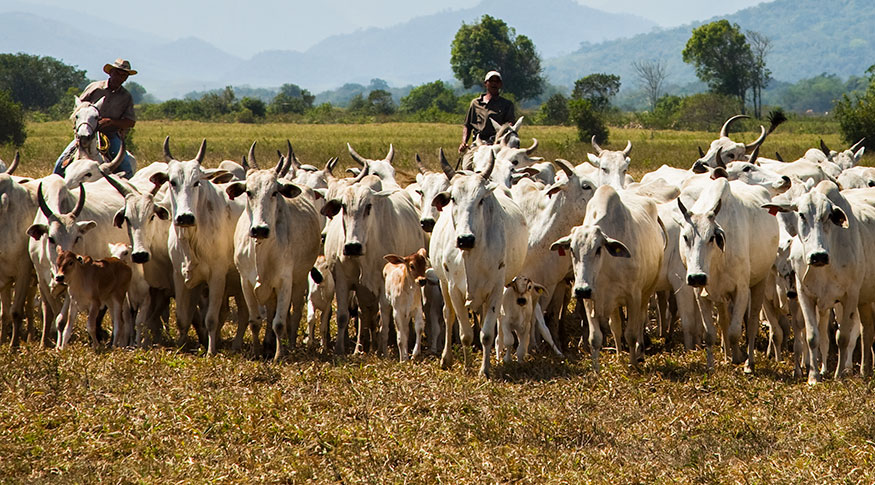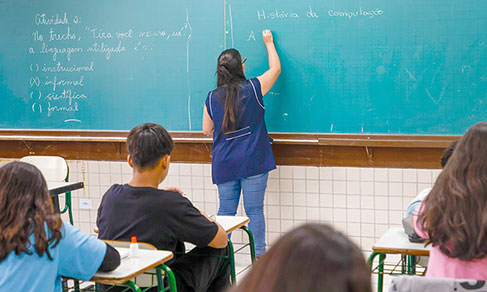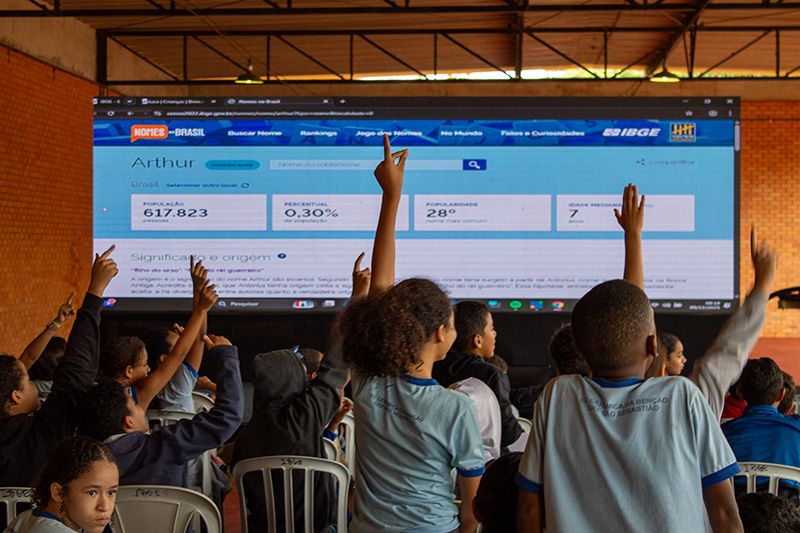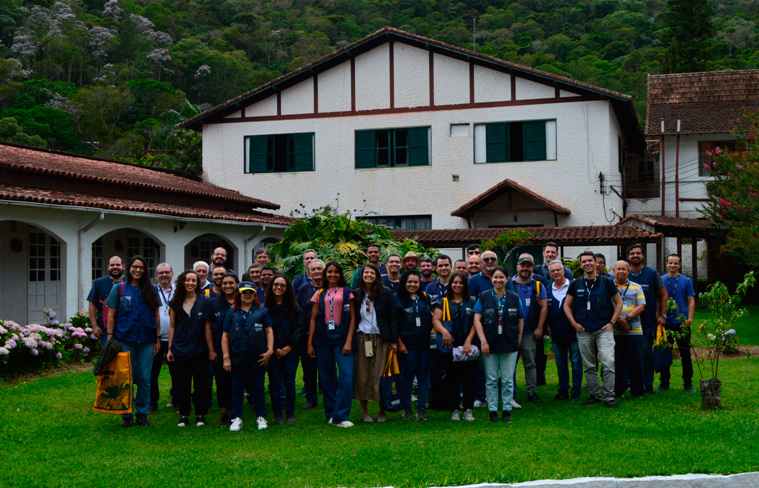Quarterly Livestock Surveys
Driven by exports and domestic market, cattle slaughter hits record in Q2
September 05, 2024 09h00 AM | Last Updated: September 11, 2024 04h54 PM

The Brazilian Institute of Geography and Statistics (IBGE) released today (5) the complete results of the Livestock Production Statistics for the 2nd quarter of 2024. The data show that cattle slaughter grew 17.5% compared to the 2nd quarter of 2023 and 6.7% compared to the 1st period of 2024. The total number of heads slaughtered reached 9.96 million, a record in the time series, which began in 1997.
Compared to the same period in 2023, 1.48 million more cattle head were slaughtered in the 2nd quarter of 2024, with increases in 26 of the 27 Federation Units (UFs). The slaughter of females increased by 20.8% compared to the 2nd period of 2023, influenced by the fall in the price of calves in the annual comparison, while the slaughter of males increased by 14.8%. According to the survey supervisor, Bernardo Viscardi, “cattle slaughter was in a retention cycle between 2019 and 2021 and moved into an expansion cycle from 2022 onwards. The price of calves decreased, which was reflected in the increase in the slaughter of females, mainly.”
The slaughter of 1.61 billion chicken head represented an increase of 3.2% compared to the same period in 2023 and an increase of 1.0% compared to the 1st quarter of 2024. This result is the second highest in the time series that began in 1997, surpassed only by the mark reached in the 1st quarter of 2023 (1.61 billion head).
The slaughter of 14.57 million head of hogs and pigs represented an increase of 2.5% compared to the same period in 2023 and an increase of 3.9% compared to the 1st quarter of 2024. The slaughter of 358.72 thousand more hogs and pigs in the 2nd quarter of 2024, compared to the same period of the previous year, was driven by increases in 17 of the 24 states.
Beef exports in the quarter reached an unprecedented level of 612.44 thousand tonnes, an increase of 30.0% year-on-year, with records for April and May (SECEX/MDIC). The great supply of animals also impacted the prices of beef, which fell during the period (CEPEA/Esalq). The export volumes of hogs and pigs grew again, reaching record volumes for the second quarters. Brazilian chicken exports also resumed their growth trend in the 2nd quarter of 2024 and reached a new record in the Secex time series.
“The domestic market is the one that absorbs the most of these proteins. In the case of cattle, there was a reduction in meat prices, which stimulated the domestic market, and in the case of chicken, there is a high demand due to more affordable prices", explained Mr. Viscardi.
Hen egg production reaches record in the time series
Hen egg production reached 1.16 billion dozen in the 2nd quarter of 2024, an increase of 9.8% compared to the same quarter in 2023 and 5.6% compared to the previous quarter, reaching a new record in the time series.
"Egg production was also a record because it is a protein with affordable prices and has high demand in the domestic market. The increase was more significant in the production of eggs for human consumption", pointed out Mr. Viscardi.
A production of 103.38 million dozen more eggs was observed compared to the 2nd quarter of 2023. More than half of the farms, 1,094 (54.5%), produced eggs for consumption, accounting for 82.4% of the total eggs produced, while 913 farms (45.5%) produced eggs for incubation, accounting for 17.6% of the total eggs produced.
Compared to Q2 2023, leather acquisition grows 16.9% and milk acquisition falls 6.2%
The tanneries investigated by the Quarterly Survey of Leather, in the 2nd quarter of 2024, received 10.08 million pieces. This total represents an increase of 16.9% compared to the same quarter of the previous year and an increase of 8.1% compared with the 1st quarter of 2024.
The acquisition of raw milk was 5.83 billion liters, equivalent to an increase of 0.8% compared to the 2nd quarter of 2023, and a decrease of 6.2% compared to the previous quarter. The increase of 43.80 million liters of milk collected nationwide, compared to the same period in 2023, comes from increases recorded in 16 of the 26 states participating in the Quarterly Survey of Milk.
“The activity increased in the annual comparison for the second consecutive time, since the declines in 2021 and 2022. Regarding the price of milk, there was an increase in relation to the 1st quarter of 2024, due to the seasonal drought", added Bernardo Viscardi.
With the advance of the drought in several producing regions, the average price of milk paid to producers increased throughout the quarter, ranging from R$ 2.45 in April to R$ 2.71 in June. Considering the average of the three months (R$ 2.60), the price decreased by 4.1% in relation to the same period of the previous year and increased by 15.6% in relation to the 1st quarter of 2024.
Impact of the floods in Rio Grande do Sul
The flooding of the Guaíba River, which began at the end of April, caused losses to agricultural activities and to the infrastructure of Rio Grande do Sul, resulting in a reduction of 40.45 thousand cattle head slaughtered in the 2nd quarter of 2024 compared to the same period of the previous year. In the annual comparison, April showed a 6.1% increase in cattle slaughter, but May and June showed decreases of, respectively, 19.8% and 16.8% in the volume of cattle slaughtered.
"The floods affected the production and mainly the logistics and infrastructure of the state, because it was not possible to sell the products or take the animals to the slaughterhouse, creating a logistical problem that affected the chain", explained Mr. Viscardi.
For hogs and pigs, despite the increase of 23.10 thousand head slaughtered in Rio Grande do Sul in the 2nd quarter of 2024, the state recorded the lowest level of activity in the last 4 years for the month of May. "The slaughter of hogs and pigs grew in the state compared to the previous year, influenced by the results of April. From April to May, there was a sharp drop", reiterated Mr. Viscardi.
Regarding chicken slaughter, the survey recorded the best month of April in the time series, however, in Rio Grande do Sul, in the months of May and June, the volume of chicken head slaughtered was the lowest in the last 12 years.
Rio Grande do Sul accounted for 6.5% of the national production of hen eggs, ranking as the 5th place in among the UF's. Despite the floods, the state showed an increase of 2.4% in the annual comparison, influenced by the result of April (+8.5%). However, in May, the month in which the effects of the flood were the strongest, production fell by 1.5% compared to the same month of the previous year and by 1.7% compared to April 2024. In June, the total number of eggs produced increased by 0.6% in the annual comparison and fell by 4.1% compared to the previous month.
The floods also impacted the leather chain, which was reflected in the drop of 71.29 thousand pieces purchased (-5.6%) in this state. Regarding milk purchases, Rio Grande do Sul showed the largest decline in the period among the states (-72.56 million liters).
More about the survey
The survey provides information on the total number of slaughtered head and the total weight of the carcasses for the species of cattle (oxen, cows, steers and heifers), hogs and pigs and chickens, with the collection unit being the establishment that carries out the slaughter under federal, state or municipal health inspection. The survey is conducted quarterly, and for each quarter of the calendar year, the data is broken down month by month.
As of the first quarter of 2018, meeting users demands for faster access to information on the livestock sector, the "First Results" of the Quarterly Survey of Animal Slaughter for Brazil was launched, releasing results on a provisional basis. They are available nearly one month before the release of the "Full Results". The data can be consulted on Sidra. The next release of the full results, for the 3rd quarter of 2024, will be on December 5.




















